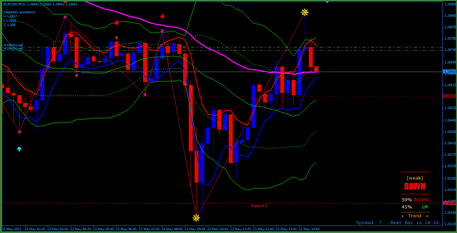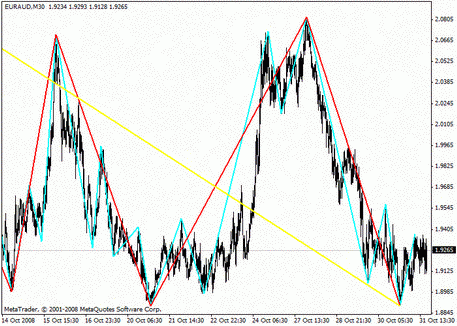
Futures trading for beginners
Thursday, 22 March 2018 10:56
Futures’ trading is a great alternative for those who tired from currency pairs. We will tell you about futures, their opportunities, and how to begin work with them.
What is futures
A futures is a contract of asset buying with forwarded price or payment deferment. In other words, when concluding a futures contract, the seller and the buyer agree in advance on the price of goods, when the time for fulfilling the obligations will come. Thus, the seller insures himself against the risks associated with an unexpected drop in the value of the asset. The buyer, in turn, gets the opportunity to buy the goods at a predetermined price, even if at the contract’s execution time its value has become much higher.
Futures are often used by suppliers of agricultural and rapidly deteriorating products. However, recently futures contracts have become quite popular in the traders and investors circles who conclude them with the aim:
- Risks hedging.
- Speculation.
Buying and selling futures is an attempt by the seller and the buyer to predict the value of the asset at the time the contract is executed. A transaction’s participant makes a profit if he expected an increase, and the price of the asset at the expiration time was indeed higher than at the time of the contract conclusion. Otherwise, his opponent remains in the black.

Futures trading opportunities
The conclusion of futures contracts occurs through exchanges, such as the Chicago Board of Trade, CME Group, CBOE, etc. The seller and the buyer have no idea who they are bargaining with. This is not required, since the mechanism of bidding is provided by the system of insurance deposits. What does it mean? When concluding a contract, a certain amount is blocked on the account of the seller and the buyer - the margin. In the event that one of the parties refuses to fulfill its obligations, the second party will not suffer. The minimum insurance deposit is about 5% of the average futures contract price, but exchanges may increase it depending on market conditions and the type of asset.
Thus, protection against fraud is the main advantage of futures trading. Other advantages include:
- Trading tools variety. With the help of futures, a trader can trade almost any asset. There are contracts for goods, energy, stock indices, and cryptocurrencies. The MICEX even suggests guessing the outcome of important events for the world economy, such as raising the rate of the Fed, the Bank of England and other Central Banks, concluding futures contracts.
- Possibility of 24/7 trading. Most futures are traded 24 hours a day. Thanks to this, there are almost no gaps in the market - sharp price jumps, which can lead to significant losses.
- Leverage using. If the investor does not have enough funds to conclude a large contract, the broker gives him a leverage, which in several tens or even hundreds of times can exceed the size of the trader's deposit. Thus, even with a small amount on the account, you can earn a solid profit by trading futures.
The latter advantage is also a drawback of futures trading. The ability to use leverage allows not only to get a big profit. It is also accompanied by the risk of losing the entire deposit in just one transaction.
How to start
A beginner who wants to trade in futures first needs to decide what trading instrument he wants to work with. Also, the trader needs to choose the expiration period of the contract and understand which trading style is most suitable for achieving his goals.

Selection trading instrument
The greatest variety of futures contracts is represented on the CME Group and CBOE exchanges. With a list of trading tools that each of the holdings offers, you can find out on their official sites in the "Products" section.
When choosing a trading instrument, it is worth to determine what is most important for you - to minimize risks or to quickly make a profit. In the first case, it is worth choosing assets with low volatility, for example, gold futures. If, however, you want to quickly increase your capital, choose tools that are characterized by wide price fluctuations. To date, the most volatile assets are cryptocurrencies. However, while trading futures for bitcoin or etherium, do not forget about the huge risks that accompany digital assets trading.
Choosing futures expiration date
The expiration date of a futures contract is the date on which the transfer of the goods from the seller to the buyer takes place. From the moment the contract is concluded before this date, it may take a week, a month, a quarter, a year, etc. To get the maximum and guaranteed profit from the transaction, you need to know the futures for delivery in which month is the most liquid. Information about this can be obtained at the site barchart in the section "Futures".
Next, you need to decide on the last day of trading and the date of the start of deliveries. It is recommended to move from one futures contract to another one a few working days before futures start deliveries. If you skip the expiration date, you will have to urgently look for a buyer in an illiquid market. As a result, the profit from the track will be much less than expected.
Ways to trade
The simplest way to trade futures is to create warrants for buying or selling, in the hope that at the contract expiration, the price of the asset will fall or grow. For beginners, this is the most acceptable option. However, experienced traders use more sophisticated methods of conducting futures trading:
- The simultaneous opening of a long position in the futures market and a short one in the market of the corresponding asset. In other words, a trader can immediately open a BUY order for a gold futures and a SELL order - directly on gold itself as a metal. Thus, he expects that the prices for both instruments will fluctuate. The trader's task in this situation is to wait for the total profit from these fluctuations to reach the highest value and close the positions.
- Simultaneous opening of a long and short position on different futures contracts. In this case, the principle of profit extraction is similar to the previous one, only we are talking about different trading instruments. Often these assets belong to the same group (Brent oil and WTI, S & P 500 futures with a delivery date in March and a similar contract, but with the delivery date in June, etc.).
- Hedging of risks. This method is used by investors, wishing to be reinsured in the event of a possible fall in shares of a certain sector, but do not want to completely get rid of this asset. For example, an investor can sell futures for the S&P500 index as a hedge against the fall of the stock market.
The next stage is the fundamental and technical analysis. This is necessary in order to determine which way most likely will go to the price of the selected futures type at the time of the contract’s alleged expiration. On the MTDownloads site you can learn more about the features of these analysis types, as well as free download trading robots for trading in futures.
Share
Related articles
- Previous article: Trading Reversals – The Course of Actions

 English
English
 русский
русский



